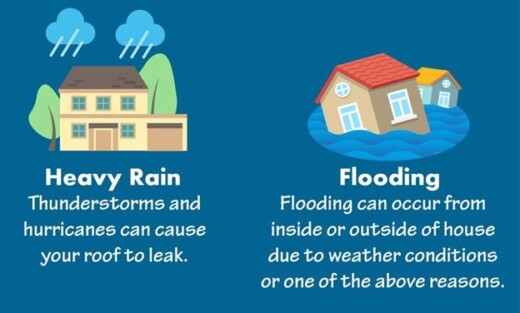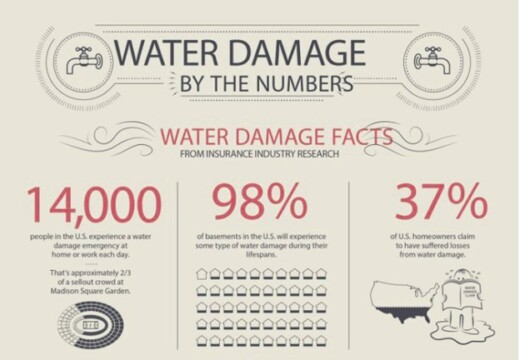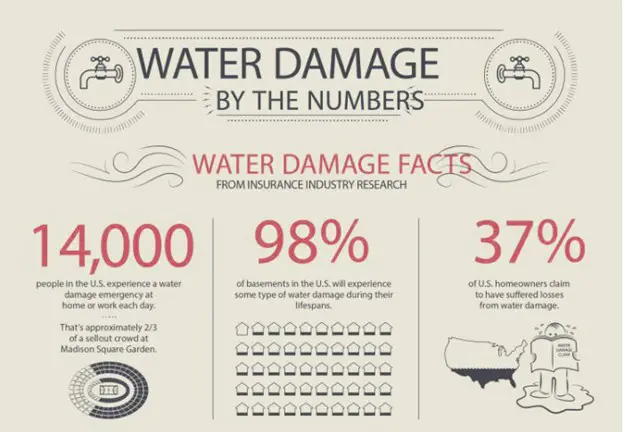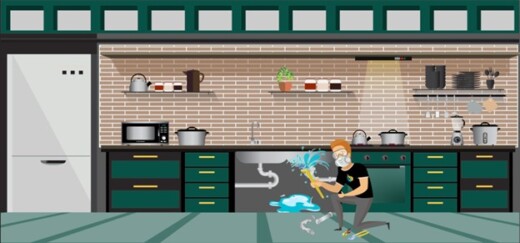Proactive water damage repair strategies guide, Guard your property from destruction tips, Homeowner advice
Proactive Water Damage Repair Strategies
25 August 2023
There’s a thin line between a stunning property and a dilapidated structure; effective maintenance.
Ideally, property preservation goes beyond renovations and repainting. It requires getting ahead of damage that could potentially escalate into costly repairs.
Preserving Property: Proactive Water Damage Repair Strategies
No disaster puts the resilience of property structures to the test quite like water damage—its impact can be swift, devastating, and usually, hard to reverse.

source : servicemastercolorado.com
In the subsequent sections, we’ll explore some of the most efficient methods of guarding your property against the wrath of water damage, from preventive measures to mitigation tactics.
Understanding Water Damage and Its Implications
Water damage refers to a myriad of issues that stem from the invasion of water into your property.
From the degradation of its aesthetic appeal to structural instability, water damage poses a serious threat to homeowners and property managers.
Understanding water damage involves recognizing its capacity to rapidly devalue your property and compromise its safety.

source: www.911restorationfranchise.com
Importance of Proactive Measures in Water Damage Control
Proactive measures are vital in controlling water damage as they allow for the timely detection and repair of issues.
These measures range from regular checks for leaks, proper property construction, careful selection of building materials to the establishment of a rapid response plan in case of water-related disasters.
Preventive Strategies for Optimal Property Protection
Mitigating water damage requires a combination of preventive strategies that contribute to the wellbeing of your property over time.
These strategies involve measures to prevent water intrusion, as well as routine maintenance to ensure that systems designed to manage water are functional at their optimal level.
Quality Rain Gutters and Downspouts Installation: These systems are crucial for directing rainwater away from your property. Opt for durable materials and ensure they are firmly attached to withstand elements.
Regular Cleaning of Gutters and Downspouts: Routine cleaning prevents clogs caused by debris, ensuring effective water flow and preventing water overflow.
Maintaining a Good Landscape Design: A thoughtful landscape can guide excess water away from the property. Consider setting up swales, rain gardens, or planting vegetation to absorb excess water.
Sealing Windows and Doors: Over time, the sealant around windows and doors can wear out, allowing water to seep in. Regular sealing using quality materials can help maintain their watertight nature.
Regular Plumbing Maintenance: Keeping a close eye on your plumbing systems, especially around appliances, bathrooms, and water heaters, can help identify and resolve minor leaks before they become a problem.
By incorporating these preventive strategies into your routine maintenance, you can help ensure the longevity and integrity of your property while minimizing the risk of water damage.
Early Signs of Water Damage to Watch Out For
Identifying the early signs of water damage is pivotal in launching a timely and effective response. Taking note of these indicators helps prevent the further spread of damage, potentially saving homeowners substantial repair costs and the inconvenience of extensive renovations.
- Discoloration of walls and ceilings: Look out for water stains that appear as patches or rings with yellow or brown tints.
- Mold and mildew growth: Unusual black, green, or white speckled stains on your property surfaces could indicate fungal growth due to excess moisture.
- Persistent musty odor: An unmistakable pungent smell in specific areas can point to water damage, particularly in hidden areas such as behind walls or under floorboards.
- Warped floors: Flooring that is lifting, cracking, or bubbling can be a sign of moisture seeping underneath its surface.
- Peeling paint: Paint blistering, cracking, or bubbling on the wall frequently implies an excessive build-up of moisture behind the walls, causing the paint to lose its adhesion.
- Gradual structural instability: Signs such as cracks in the walls, uneven floor levels, or doors and windows becoming difficult to open or close can indicate a weakening structure due to water infiltration.
Being aware of these signs can help you catch water damage early and avoid more extensive damage. Regular inspections by professional water damage repair services are also recommended for thorough assessment and resolution.
5 Effective Mitigation Tactics for Water Damage
When water damage comes knocking at your property’s door, time is of the essence. Rapid and effective mitigation tactics are essential to curb the damage’s progression and circumvent the challenges that follow, like mold or structural instability.
1. Availing of Professional Water Damage Repair Services
As an immediate response to significant water damage, always call on experienced professionals. These specialists have the skills, equipment, and understanding to navigate any water damage scenario. They will accurately identify the water source, assess the extent of the damage, and determine an effective remediation strategy.
2. Isolating Affected Areas
Next, it’s necessary to isolate the areas affected by water damage. This action helps prevent the spread of moisture and potential contaminants. By sealing off rooms or areas affected and stopping sources of airflow, such as HVAC systems, further damage can be mitigated.
3. Removing Soaked Items
Water-damaged items such as rugs, furniture, and personal belongings need to be moved. Removing these items not only lowers overall humidity levels in the space but also facilitates the cleaning, repair, or replacement of the affected items.
4. Drying and Dehumidification Process
Focusing on thorough drying and dehumidification of the affected areas is crucial. The goal here is to eliminate all residual moisture, preventing further complications like mold growth. This often requires professional equipment like air movers and dehumidifiers to speed up the drying process effectively.
5. Sanitizing the Affected Areas
Finally, water damage, particularly from non-clean water sources, can lead to contamination by microorganisms or chemicals. The affected areas need a thorough cleaning and sanitizing to restore them to a safe, liveable state. Avoid water damage and black mould in your home.
By following these essential steps for mitigating water damage, homeowners can minimize the potential for additional damage or complications. The key, however, lies in recognizing the need for, and quickly seeking, professional water damage repair assistance.
Conclusion: Long-Term Benefits of Preventing Water Damage
By taking proactive measures against water damage, homeowners can enjoy numerous benefits. Such benefits include a maintained property valuation, extended lifespan of structural components, reduced repair costs, and a healthy living environment free of mold and waterborne diseases.
It is clear that prevention is the surest, most cost-effective way to preserve property against water damage. By taking decisive action today, both property owners and managers can secure properties for a tomorrow free from the stress of water damage.
Proactive water damage repair strategies FAQs
Q: What exactly is water damage and how does it affect my property?
Water damage refers to issues resulting from the incursion of water into your property, potentially leading to structural instability or deterioration of aesthetic value. This can be due to flooding, leaks or excess humidity, causing issues such as mold growth, discolored surfaces, damaged furniture, and more.
Q: Can water damage be unseen or hidden?
Yes, water damage can often remain unseen until it becomes severe. Certain signs such as mildew odor, dampness, or discoloration in walls or flooring can signal hidden water damage.
Q: Where can I find efficient water damage repair services in Nashville, Tennessee?
There are numerous reputable, efficient water damage repair services in Nashville. It’s crucial to choose a service that has solid experience, round-the-clock availability, offers a comprehensive diagnosis, uses state-of-the-art equipment, and can guide you on strategies to prevent future water damage.
Q: Is it possible to completely prevent water damage?
While it is impossible to predict natural disasters such as floods, you can substantially minimize the risk of water damage. Proactive measures range from regular property maintenance, usage of quality materials in construction, installing efficient drainage systems, and sealing potential water entry points.
Q: Are professional water damage repair services necessary?
While minor water damage may be addressed personally, hiring professionals becomes important when damage is severe or if the source of damage is unknown. Professionals can identify root causes, advise on prevention strategies, and make repairs more efficiently.
Q: Does home insurance cover water damage repair?
Coverage for water damage repair depends on your insurance provider and the specifics of your policy. Generally, sudden and accidental damage, like water damage from a burst pipe, is covered. Yet, damage from gradual leaks or negligence typically is not. It’s important to review your policy thoroughly or consult your insurance provider.
Comments on this guide to Proactive water damage repair strategies article are welcome.
Property Water Damage
Architectural design strategies to safeguard against water damage
Building with water tanks in Edinburgh
Impact of water damage on architecture in Edinburgh
Comments / photos for the Proactive water damage repair strategies advice page welcome






